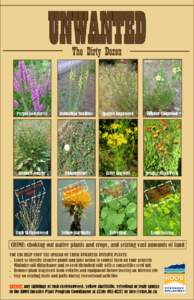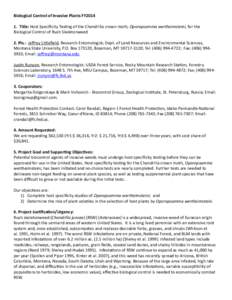<--- Back to Details
| First Page | Document Content | |
|---|---|---|
 Date: 2014-03-18 15:55:38Invasive plant species Botany Biology Natural environment Skeletonweed Centaurea solstitialis Euphorbia esula Centaurea Chondrilla juncea Invasive species Linaria dalmatica Velvetleaf |
Add to Reading List |
 Dirty Dozen Unwanted poster_FINAL_updated July 2010
Dirty Dozen Unwanted poster_FINAL_updated July 2010


